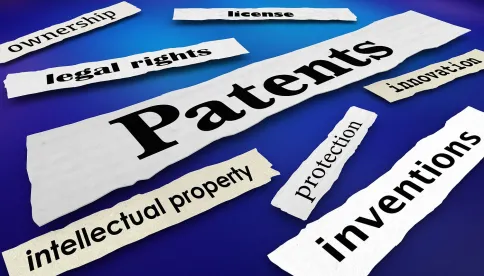So far, it’s been a slow year for jurisprudence in the life sciences, so I thought I would take a look at the somewhat quirky decision in Qualcomm, Inc. v. Apple, Inc., Appeal nos. 2020-1558, -1559 (Fed. Cir., February 1, 2022). I won’t pretend to understand the technology in question which involves integrated circuit devices with power detection circuits for systems with multiple supply voltages. Some of the claims in Qualcomm’s patent (U.S. Pat. No. 8,063,674) had been found obvious by the Board in an IPR proceeding, based on a combination of “applicant admitted prior art” (AAPA) that was in the patent itself and a prior art patent application that was also discussed in the ‘674 patent, Majcherczak, (2002/063364). It was conceded that all the elements of the claims in question were disclosed in these two documents, and the Board treated them as “prior art consisting of patents and printed publications” and granted Apple’s petition for IPR, then found the claims obvious.
Qualcomm decided to start at the beginning of 35 U.S.C. s. 312 and argued that AAPA could not be used as support for a s. 312(b) petition; in other words that IPR cannot be initiated by submission of AAPA, regardless of whether or not the AAPA is, in fact, prior art. The Board disagreed and characterized AAPA as “prior art contained within [the challenged] patent.” The PTO Guidance agreed with Qualcomm. The Fed. Cir. panel noted that the Guidance “reads our caselaw to permit the use of AAPA in [IPR] as evidence of the general knowledge of a skilled artisan.” So the question before the panel was boiled down to “whether AAPA constitutes prior art consisting of ‘patents and printed publications’ such that it may form ‘the basis’ of a ground in IPR.” The panel held that these AAPA materials must themselves be prior art to the challenged patent, and can only function as an indicator of the state of the art, as considered by a person of ordinary skill in the art. The panel remanded the case to the Board to apply the proper standard to use when deciding whether or not to grant the attacker’s position.
This is a satisfactory outcome so far as I can see, but there is not guidance to the Board as to how this might affect the outcome in the present case. The source of the material in the ‘674 patent that discusses the prior art circuitry pre-Majcherczak is not disclosed apparently because it was clearly AAPA. The Majcherczak solution to the problem addressed is clearly prior art. So, it appears that Apple will have some digging to do to meet the requirements for a grant of IPR, but not very much (unless Qualcomm never released any of this AAPA “in writing” prior to putting it in the application, which seems unlikely.) Qualcomm won this battle but, given the costs and the fact that the Board found the claims obvious, even if the grant was improper, doesn’t it look like a pyrrhic victory?


 />i
/>i

